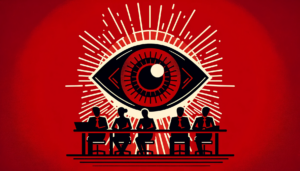Using storytelling to lead with impact
- 7 Min Read
Do you ever have a diverse audience to share information with? Maybe you create detailed, colorful slides that look like hieroglyphics? Do you ever lose your audience or lack confidence in your ability to influence others? If you answered “yes” to any of these questions, it’s time for you to work on your storytelling skills. […]
- Author: Robyn Shumer
- Date published: Feb 21, 2023
- Categories

 Do you ever have a diverse audience to share information with? Maybe you create detailed, colorful slides that look like hieroglyphics? Do you ever lose your audience or lack confidence in your ability to influence others? If you answered “yes” to any of these questions, it’s time for you to work on your storytelling skills.
Do you ever have a diverse audience to share information with? Maybe you create detailed, colorful slides that look like hieroglyphics? Do you ever lose your audience or lack confidence in your ability to influence others? If you answered “yes” to any of these questions, it’s time for you to work on your storytelling skills.
You’ve mastered your complicated human resources content and now need to shift focus on how to share it with others in a way that leads to action.
No matter where you’re at in your career, you want to lead people and teams to impact and one tactic for doing so is through storytelling. Using a structure influenced by the work of Nancy Duarte and Simon Sinek, let me explain a method for stringing together your stories, pearl by pearl, until you have a necklace.
Why storytelling?
If you are asking yourself “why storytelling?” you are already on the right track. The first step in the process is understanding your ‘why.’ Why am I telling this story? Why am I giving this presentation? What do I believe so strongly in that I want to drive people towards action? Stories have been an essential driver of change throughout human history. There are remarkable benefits to sharing your story. Emotional, autobiographical storytelling can be a path to truly owning your story. It can also lead to more cohesive teams and stronger organizational performance.
A well-known benefit of storytelling is finding your voice. It means learning how to process your life experiences and finding the right way to express yourself. During this step, you are sharing your story with others. By ‘giving it away’ you can use your journey to help others on theirs. Helen Keller was the first blind and deaf person to learn how to read, write and speak. She used her story to help fight for more opportunities for people with disabilities.
Once you’ve settled on ‘why,’ let’s consider the value of a strong and engaging opening. What ideas might you have for a strong opener? A SHOCKING story with a surprising twist serves as an excellent opener. So too, do questions that immediately engage the audience, bringing them into your story. Try questions such as “can you imagine…” and “I wonder if could …”
Gathering, analyzing, and presenting your content
The next step is content gathering. Using sticky note pads write everything you know to be true about your topic, one idea per sticky. Spend time on Google, read literature, or if it’s a personal story, look in your diary. Once you have generated and documented your ideas, think about the characteristics of a “good” story including a blend of emotional and analytical data. Sorting through your stickies and denoting which ones contain analytical data, and which contain emotional, is the next step. Do you think most people start this process with an equal balance? No, and that’s why this exercise is so important.
Signals and noises
Now that we have balance, let’s analyze the content again. But this time, let’s ask ourselves if that sticky note contains a ‘signal’ or a ‘noise’. Signals are a must-have. It’s content that needs to be part of your story because it adds a tremendous amount of value. Noises are anything that distracts the audience from your story or the reader from your narrative. Think about when you’re on the phone with someone and don’t have a clear connection and you can only understand every fifth word the other person is saying. That’s distracting and prevents you from truly understanding what they are saying. Content that people deem ‘noisy’ might not have a place in this story, but you can save it for another time.
Multi-sensory storytelling
It’s important to incorporate multi-sensory augmentation into your presentation or story. This step along with the others is critical for both oral and written storytelling, and it’s fun! This is when you describe what things look like, feel like, sound like, and taste like. Let me offer an example from my own TED talk. “I was naked, freezing, exposed. My feet were especially cold atop the metal platform of the scale.”
How can you allow your audience to “marvel at the magnitude” (Duarte, 2019) of your data? What metaphors might you use to connect with everyone in the room? Could you say something like, “What if the next time you scheduled a meeting you considered everyone’s hourly rate and calculated how much that 30 minutes would cost? Would you have a meeting about a meeting if it cost $900?”
Consider ‘The End’
Let’s make sure that you’re clear on WHAT you want your audience to do. What behavior do you want them to change after reading your article or listening to your talk? Do you want them to say “yes” to something? Then clearly end with something like, “You’ve heard how providing water filters to tribes in remote African villages impacts overall public health and well-being, enables parents to work and children to learn in school. Will you join me on this journey to provide 100,00 filters by end of 2020?” By using a storytelling approach to data sharing, people will connect with your why and say “yes” to your ask. The more you rehearse and use this approach, the more confidence you will have as a speaker.
Storytelling in action
Storytelling may seem like just another business buzzword, but unlike other fads, it’s a skill that has been around since the beginning of time. Countless corporations are training their end-to-end business partners in storytelling; I provide storytelling workshops to people across the globe. People are naturally more receptive to stories than to facts and figures. Let me share a real-life example.
A team of volunteers at an international corporation had successfully designed a mentoring program for inner-city high school students. Once implemented, these students acquired knowledge, developed personally, and delivered for the business. After a few years, the volunteers acknowledged that these students should be compensated for their time (this was a 2- year program that met most Saturdays). After conducting external benchmarking, they decided that $5,000 per student, per summer, was fair. They had a BIG decision to make on HOW to approach senior leadership to ask for this money.
Imagine if you are that leader and someone says, “We need $5,000 per student for the mentoring program, okay?” You might roll your eyes and say, “budgets are tight.” Instead, this team approached senior leadership and tapped into their humanity. “Mrs. VP, if you could change the trajectory of an inner-city high school student’s life for just $5,000, would you do it? This is a future leader who shows up most Saturdays for the mentoring program and dreams of being the first family member to attend college. What do you think?” Using this storytelling approach that engaged the leaders emotionally, every leader said “yes!”
The impact on HR leaders?
Storytelling influences behavior. I am seeing all diverse types of business development and sales executives use this approach with their clients. They listen to their customer’s stories and then develop solutions to meet those needs by telling the story of their solution. In one example a pharmaceutical sales executive chooses to connect with her oncology customers by being vulnerable and sharing that she, too, is a patient and she relies on this product. How might HR professionals use this approach to their employee-focused work?
________________
Robyn Shumer facilitates leadership development engagements at Johnson & Johnson and is a storyteller who amplifies the skills and competencies of others. She teaches the craft enabling others to share their personal and business stories successfully and in an engaging way. According to her Facebook profile, she also considers herself “An eating disorder warrior princess.” She is on the leadership team of Johnson & Johnson’s Mental Health Diplomats – a group dedicated to eliminating the stigma around mental health. She founded ‘What’s Your Story, USA,’ an initiative that teaches storytelling and organizes storytelling events that also raise money for non-profits. To learn more about using storytelling in the workplace or personally, visit robynshumer.com









